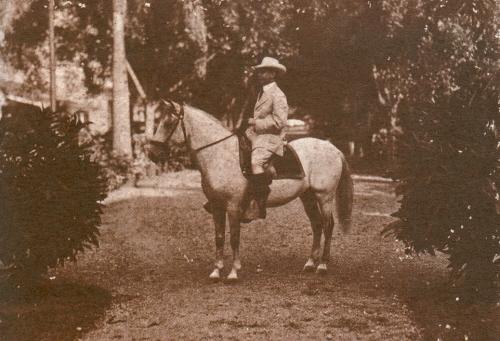
Edward Winter
Articles 53 and 54 in our Chess Explorations series for ChessBase comprised a quiz about photographs of masters with animals. The pictures are shown below, with additional material.

This photograph of Capablanca appeared on page 31 of Chessworld, May-June 1964, in an article by Olga Capablanca entitled ‘The Young Manhood of José Raoul Capablanca’.
From our archives we add another picture of the Cuban in equestrian company. It was published on page 5 of the Diario de la Marina magazine, 7 November 1946:
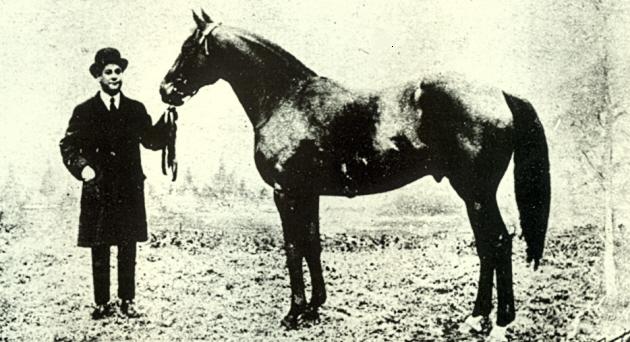
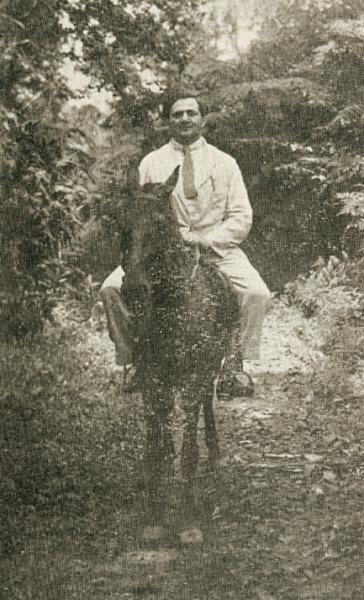
The above picture of Boris Kostić is in the plate section of a monograph on him, Ambasador Šaha by D. Bućan, P. Trifunović and A. Božić (Belgrade, 1966).
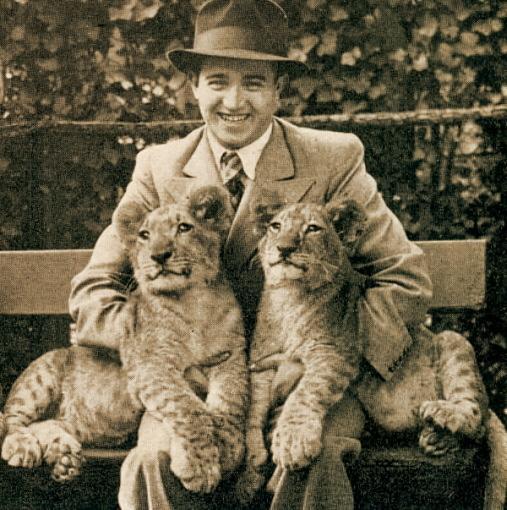
Salo Flohr was photographed at Berlin Zoo. Source: Caïssas Weltreich by Max Euwe and Bob Spaak (Berlin-Frohnau, 1956). The complete shot, in which Flohr posed with his wife, is given later in the present article.
On the subject of lions, the case of the Reverend Harold Davidson was discussed in C.N. 5592 (see also C.N. 5730). A picture of him from page 14 of The Rector of Stiffkey and Morston by Buttercup Joe (Briston, 1985 and 1987):
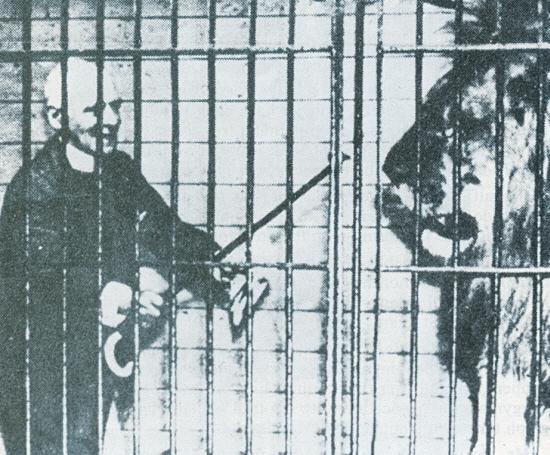
An extract from C.N. 5592:
C.N. 5574 asked which chessplayer Edgar Lustgarten described as being ‘the subject of more public discussion than any other English clergyman since Wolsey’.
The observation appeared on page 290 of Lustgarten’s book The Judges and The Judged (London, 1961), in his chapter on ‘The Rector of Stiffkey’, Rev. Harold Francis Davidson (1875-1937). Davidson’s ‘extra-rectorial activities’, to borrow the genteelism coined by Lustgarten, have been widely narrated. One of the lesser-known monographs is The Rector of Stiffkey and Morston by Buttercup Joe (Briston, 1985 and 1987):
Davidson’s death was briefly mentioned on page 7 of CHESS, 14 September 1937:
In fact, Davidson survived the mauling for two days, and the circumstances of his death, in hospital, appear quite complex. Of course, that is too dull for a book such as The Even More Complete Chess Addict by M. Fox and R. James (London, 1993), and so page 22 had some ‘fun’ by making out that the lion devoured Davidson.
C.N. 5575 included this photograph from page 130 of the April-May 1910 Wiener Schachzeitung:
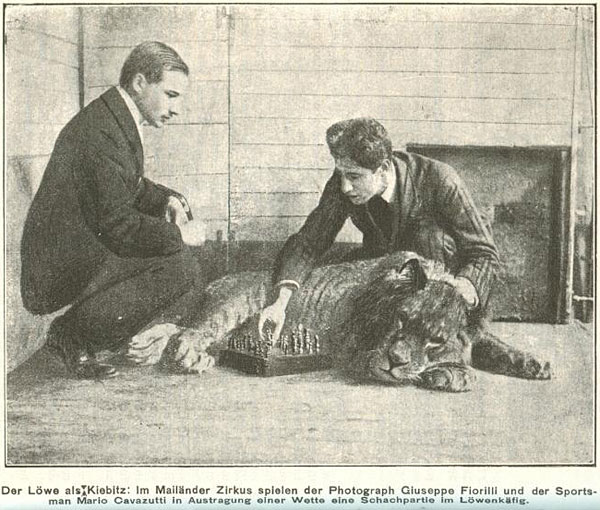
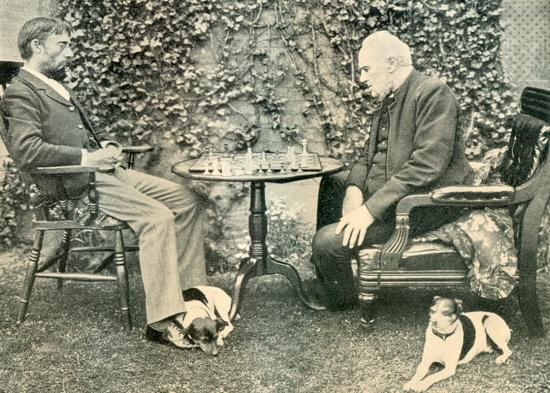
This photograph of Amos Burn and John Owen comes from A Century of British Chess by P.W. Sergeant (London, 1934), which stated that it was taken ‘in the garden at Hooton’.
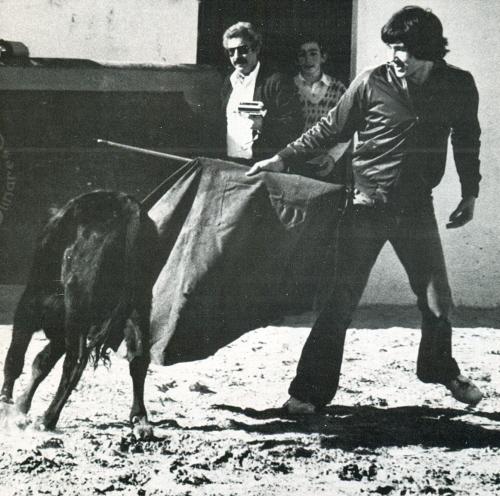
The above picture (from Linares, 1981) was on the front cover of the May 1981 Chess Life. Two further shots of Larry Christiansen were presented on page 11:
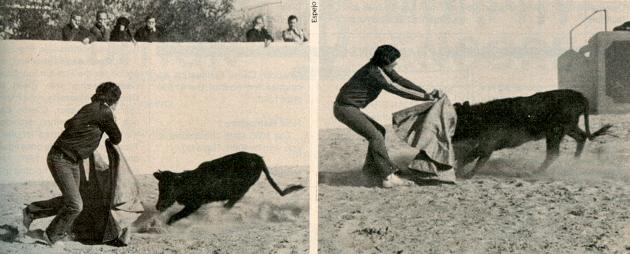
Concerning Grace Alekhine as a chessplayer, in C.N. 4102 Dominique Thimognier (St Cyr sur Loire, France) pointed out a report on page 7 of the November 1944 Bulletin de la FFE that she was the women’s champion of Paris in 1944:
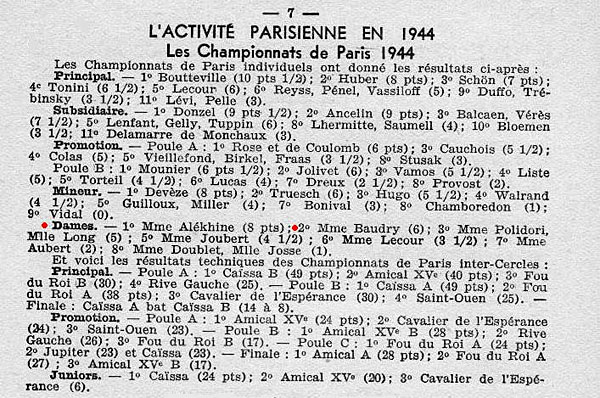
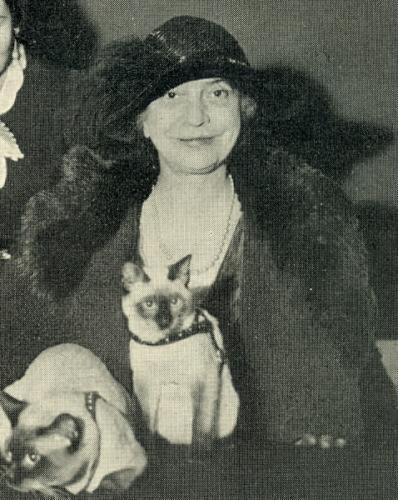
The wives of Kmoch, Flohr and Alekhine appeared in the above-mentioned Euwe/Spaak book:
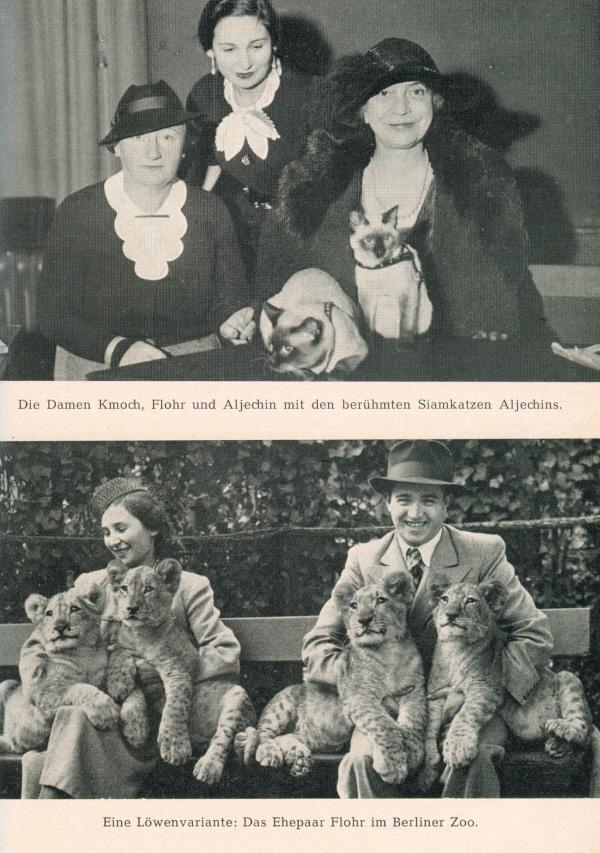
C.N. 5575 gave the following photographs, from pages 6 and 8 of Zooals ik het zag (Amsterdam, 1935 and 1976):
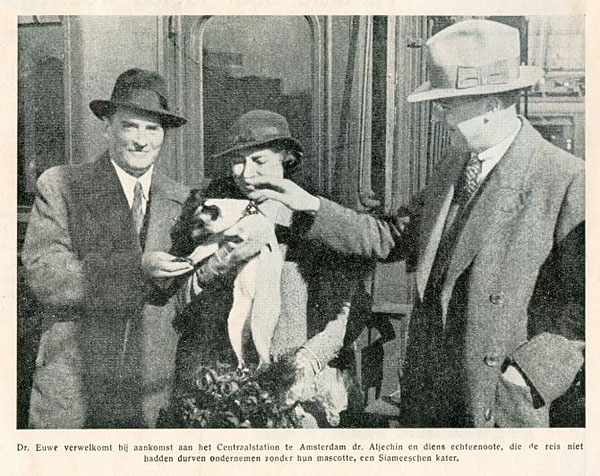
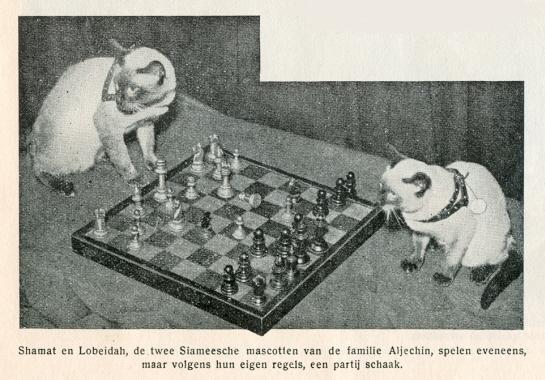
This picture of Alekhine was given in C.N. 4794, courtesy of Jan Kalendovský (Brno, Czech Republic):
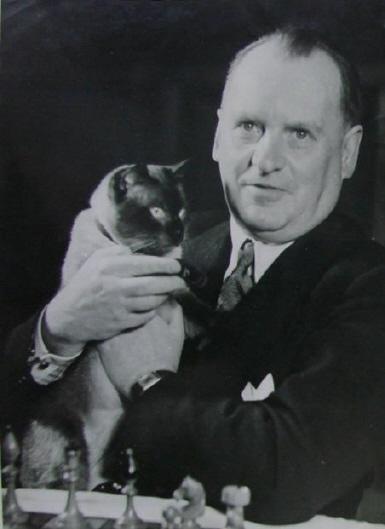
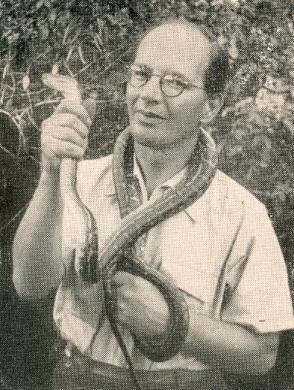
The final photograph in the ChessBase quiz was of Frank Arthur Crowl. It appeared several times in Chess World (e.g. in 1951, 1959 and 1965), and on the last of those occasions, the magazine stated that it was taken ‘at a Serpents’ Sanctuary near Brisbane, 1951’.
Crowl (a veritable eccentric at the board and away from it) was often described by C.J.S. Purdy as ‘the Australian Nimzowitsch’. Since he is little known nowadays, we have, under that title, a feature article on him. There are some specimens of his play, including what Purdy described as ‘the most inspired “mysterious rook move” (to use Nimzowitsch’s terminology) I ever saw’.
A further selection of pictures from C.N.:
From ‘Genius’:
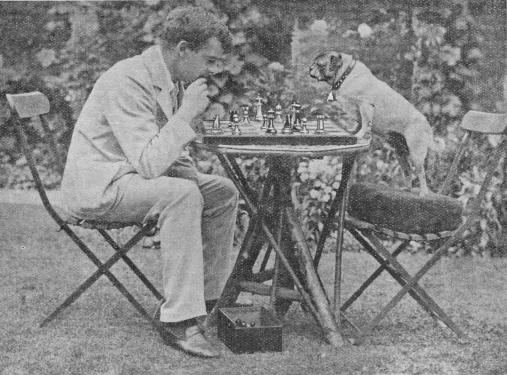
Philip Hamilton Williams, on page 119 of the Chess Amateur, January 1909
The cartoon and poem below come from page 244 of the December 1898 American Chess Magazine, to mark Pillsbury’s chess tour and the victory of the Republican Party in the mid-term elections:
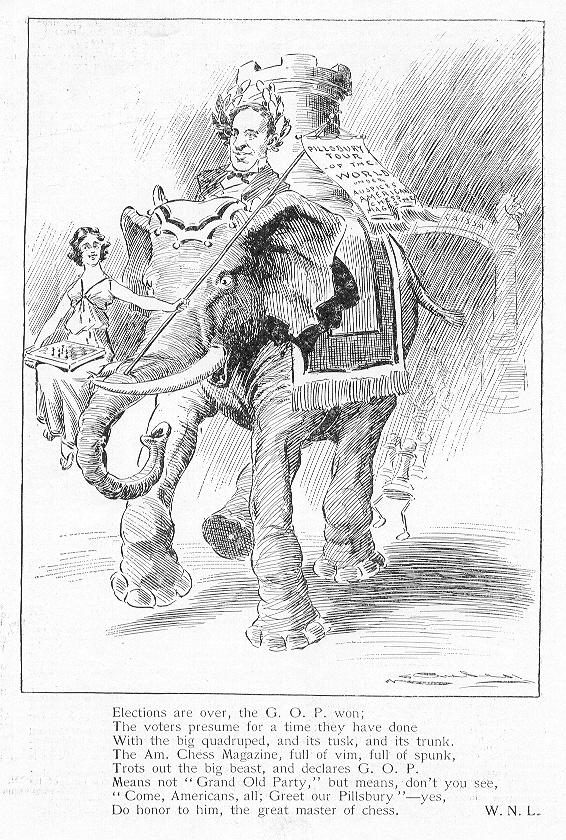
(3932)
Siegfried Hornecker (Heidenheim, Germany) draws attention to a photograph of Alain Campbell White on page 6 of the fifth section of the Pittsburgh Gazette Times, 30 October 1910:
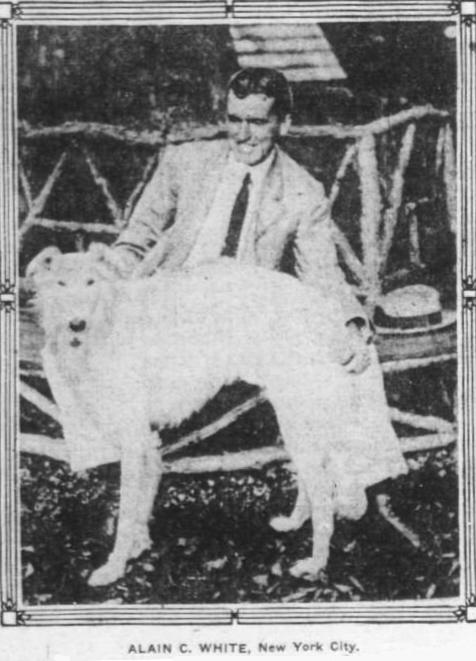
(5925)
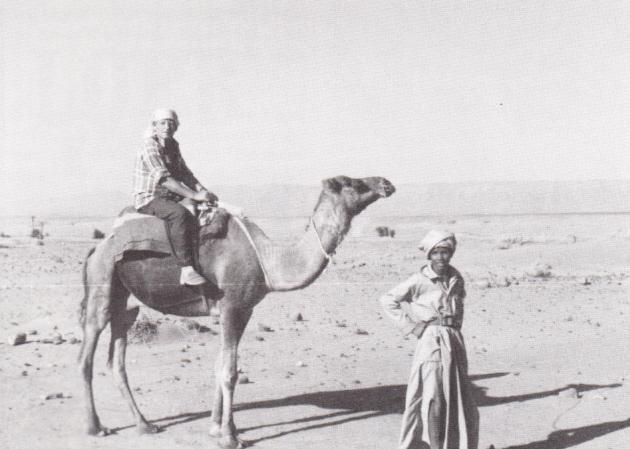
This photograph shows Max Blau and comes from page 27 of the booklet Max-Blau-Memorial Volksbank-Open (Berne, 1987).
The next page had another shot:
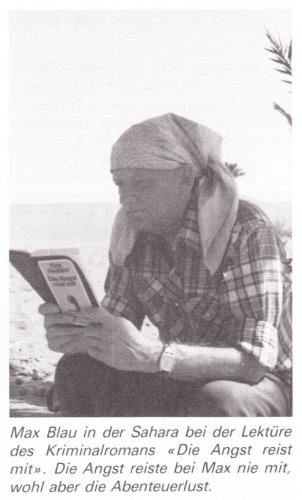
(7988)
José Fernando Blanco (Madrid) enquires about reports that Alekhine had feline company at the board during his 1935 world championship match against Euwe.
The most direct evidence that we can quote is Euwe’s comment in an interview with Pal Benko on page 411 of the August 1978 Chess Life & Review:
‘Alekhine was very superstitious. He had a Siamese cat, and sometimes before a game he would put the cat on the chessboard to smell it. He could not play with the cat in his lap, so he wore a sweater with the cat’s picture on it. These things did not disturb me in the first match in 1935. Either Alekhine was not normal or the rest of us are not normal. Anyway, the fact that such a great player as Alekhine needed little tricks like that gave me encouragement.’
(8301)
From page 283 of the May-June 1936 issue of Les Cahiers de l’Echiquier Français:
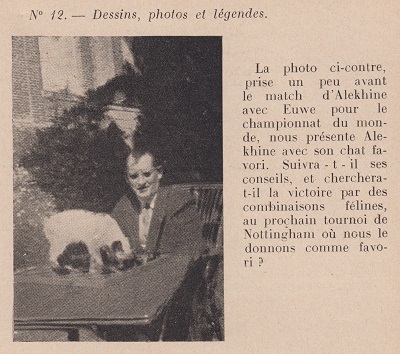
(9778)
From page 11 of Het Noorden in woord en beeld, 19 November 1937:
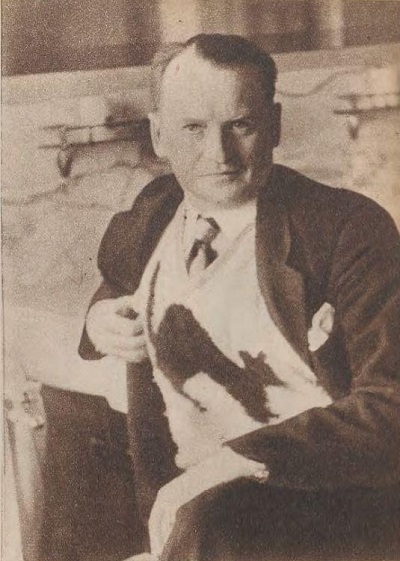
(11361)
From page 15 of Sport in beeld, 13 December 1937:
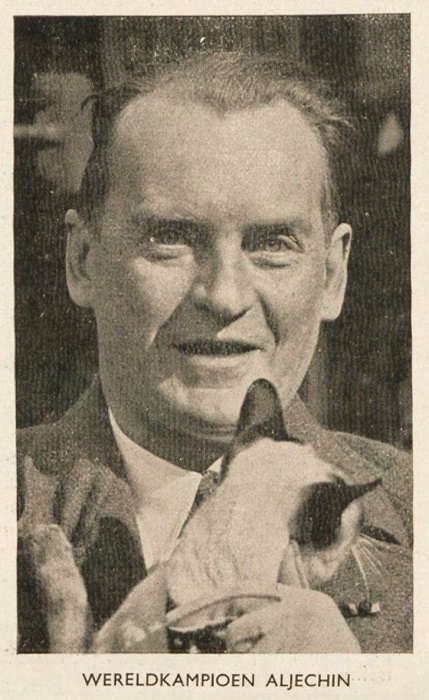
(11361)
An excerpt from page 113 of Kings of Chess by William Winter (London, 1954), in the chapter on Alekhine:
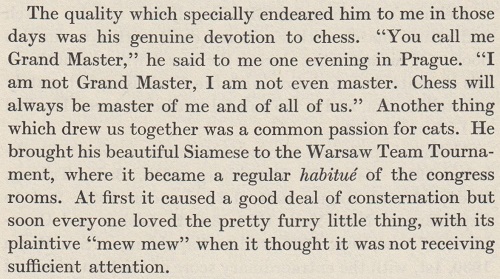
The ‘I am not Grand Master’ remark was discussed in C.N. 5525
(11419)
C.N. 7988 showed Max Blau astride a camel. Below is another master, but who?
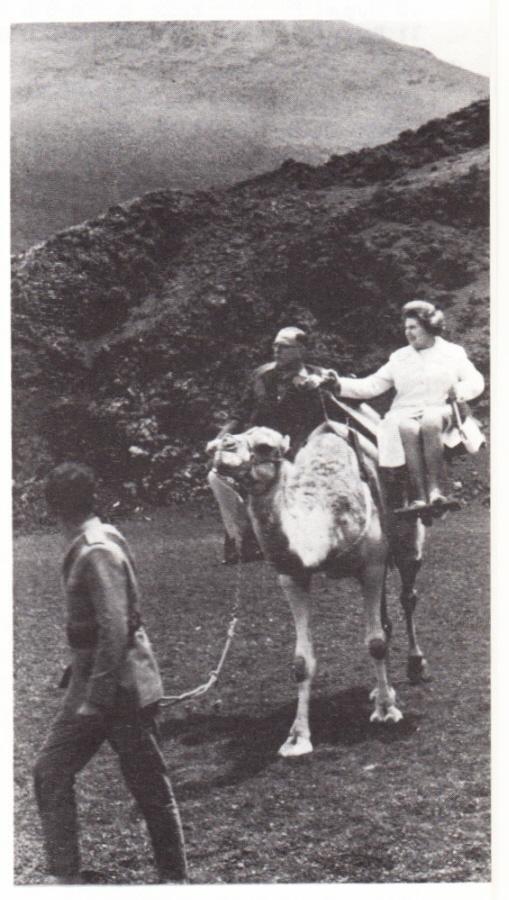
(8354)
Short-cuts to being quoted include bogus epigrams, extravagant historical comparisons, and hyperbolic praise or criticism of a given master’s play. For some reason, a foray into zoology can be particularly useful. The writer managing to work, say, ‘cobra’ into any description of a player or game may well find the phrase picked up by others.
(8606)
A cartoon by Harrison on page 27 of Let’s Play Chess ‘by the Editors of Chess Review’ (New York, 1950):
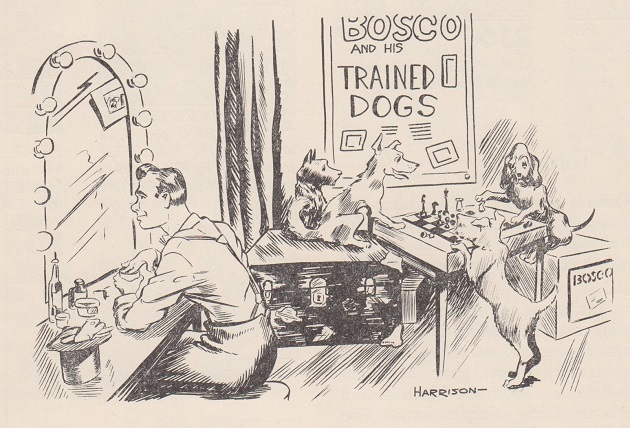
(9321)
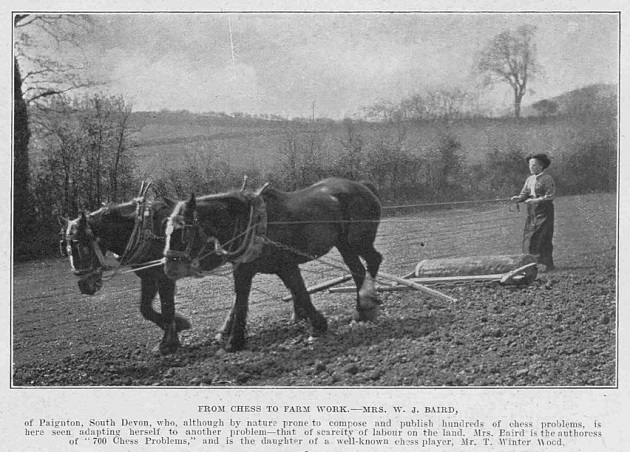
Illustrated Sporting and Dramatic News, 13 May 1916, page 291
(10307)
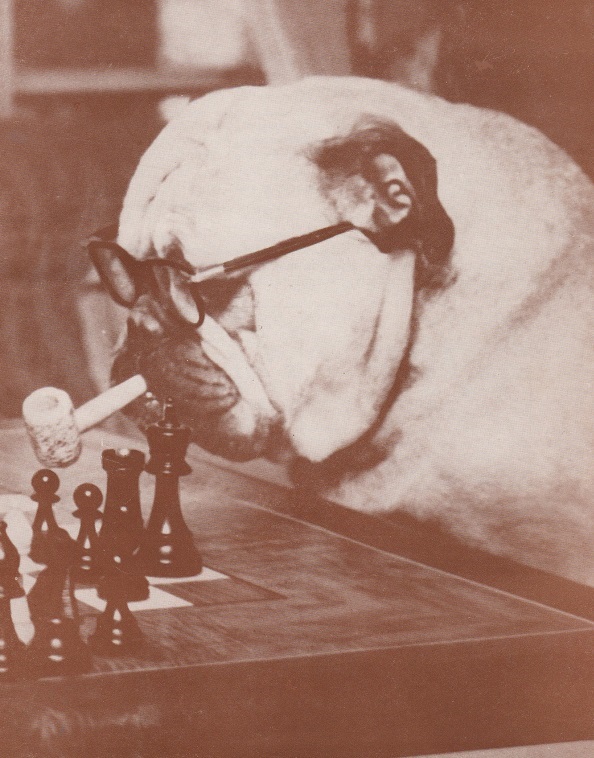
Chess Review, January 1955, front cover
This is the kind of photograph that writers and editors seem incapable of reproducing without a trite pun.
(10456)
The first illustration in Chess Corn Corner is from CHESS, February 1948, page 117:
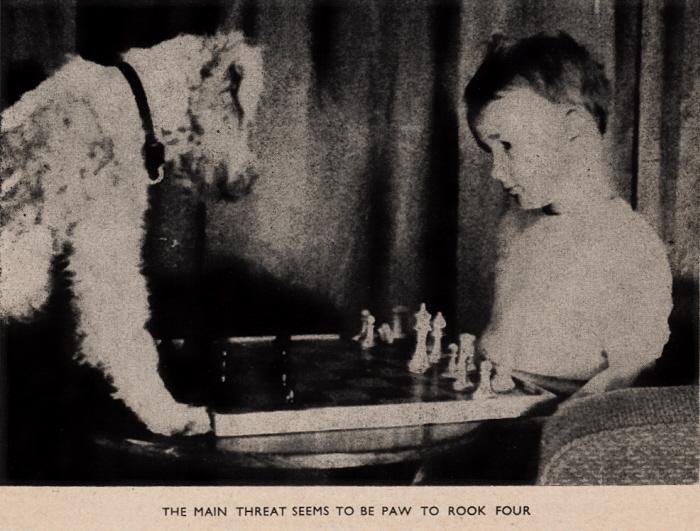
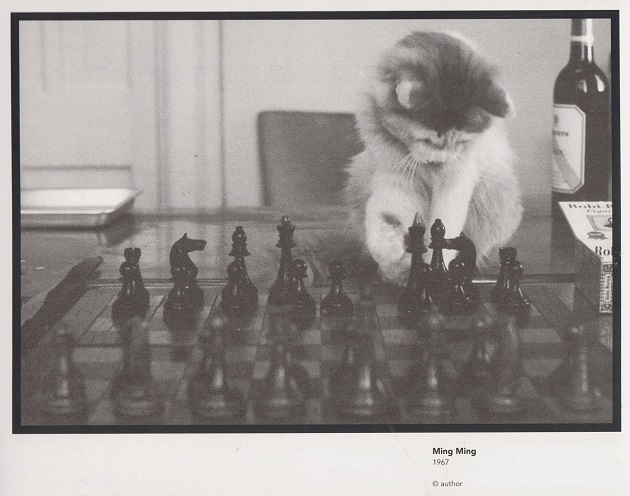
Patrick Myricest (Dublin) draws attention to the above photograph on page 129 of a book published by Reuters, Frontlines: Snapshots of History (Harlow, 2001). The chapter (pages 128-134) is by Anthony Grey, who became Reuters’ correspondent in the Chinese capital in 1967. In mid-July that year he was placed under house arrest by the foreign ministry, and until his telephone line was disconnected ...
‘... I’d played chess by telephone with John Weston, a friend in the British mission who later became ambassador to the United Nations. Then Ming Ming had often sat endearingly beside the board, dabbing delicately at the pieces with her paw, and I had photographed her doing this.’
On the night of 18 August 1967 ‘a horde of 200 Red Guards stormed my house ... yelling “Hang Grey! Hang Grey!” But instead of hanging me, the mob hanged, before my face, a fluffy brown-and-white female cat named Ming Ming which had been sharing my imprisonment with me.’
The chapter provides graphic detail, and here we merely give two pull-out quotes on page 131:
‘The Maoists had decided that pets were symptomatic of a bourgeois lifestyle ...’
‘... the violent death of Ming Ming remains a poignant symbol of the political hysteria and madness that then gripped the world’s most populous nation.’
We are grateful to Mr Anthony Grey for permission to reproduce his photograph here.
(11451)
From page 128 of the Reuters book mentioned in C.N. 11451, Frontlines: Snapshots of History (Harlow, 2001):
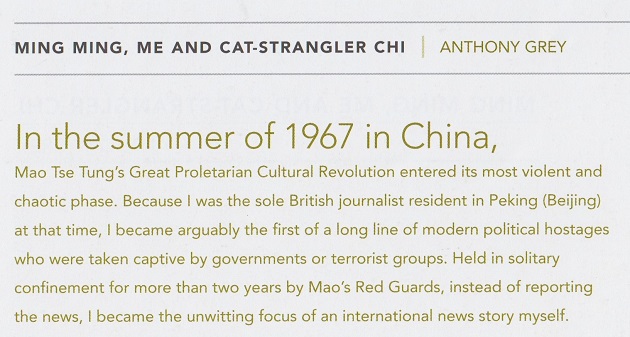
On page 130 Anthony Grey reported that his pet Ming Ming was ‘hanged on a rope from the balcony’ and that ‘then they stabbed the cat’s lifeless body with a pair of scissors and daubed her blood on the bed-sheets in my newly improvised “prison-cell” ...’
With the permission of the Anthony Grey Archive at the University of East Anglia, the original of his photograph is reproduced below:
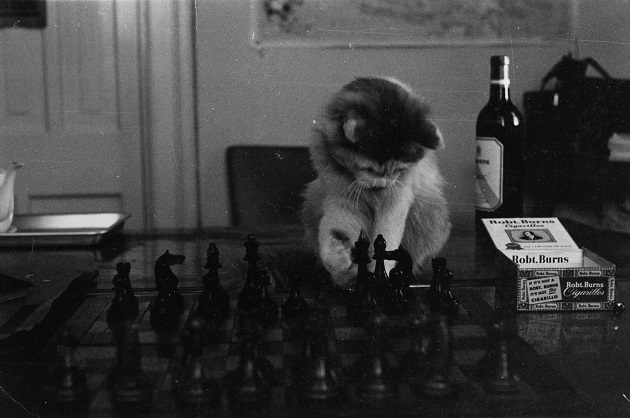
(11464)
All the photographs below are reproduced, with the requisite permission, courtesy of Olimpiu G. Urcan (Singapore). We begin with Alekhine, on pages 3-4 of the 12 April 1936 issue of Pesti Napló Képes Melléklet:
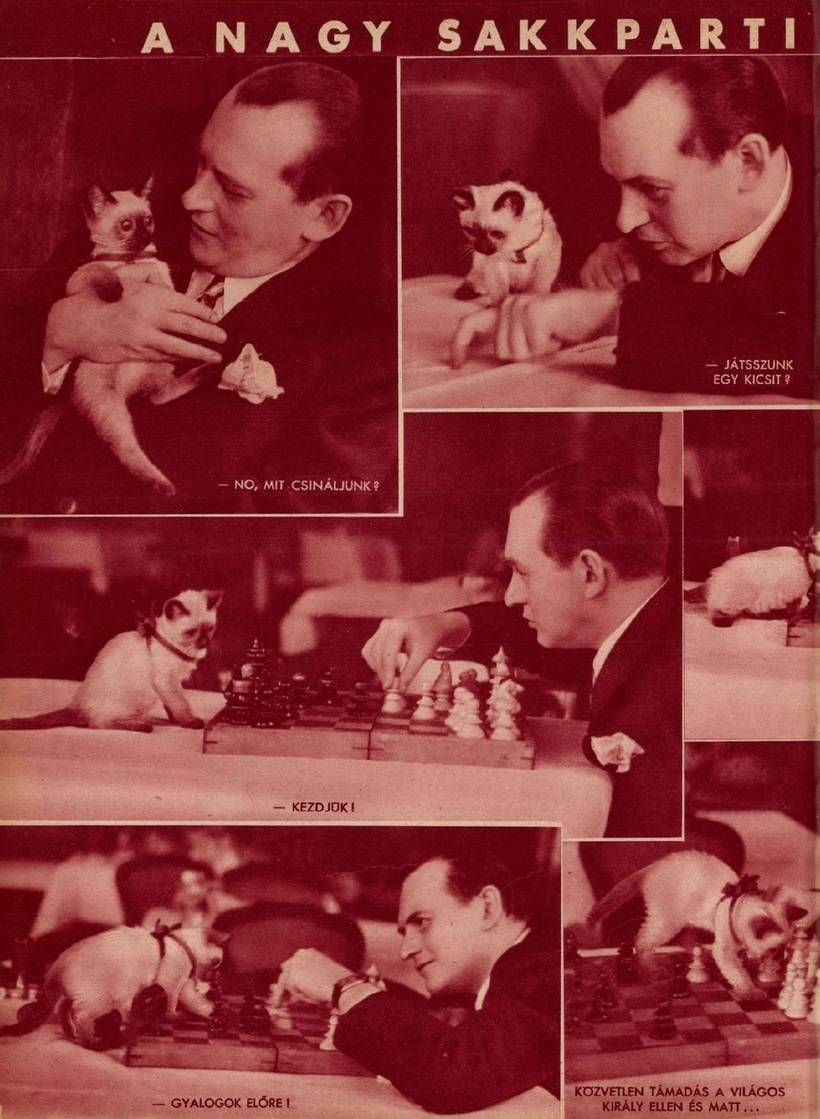
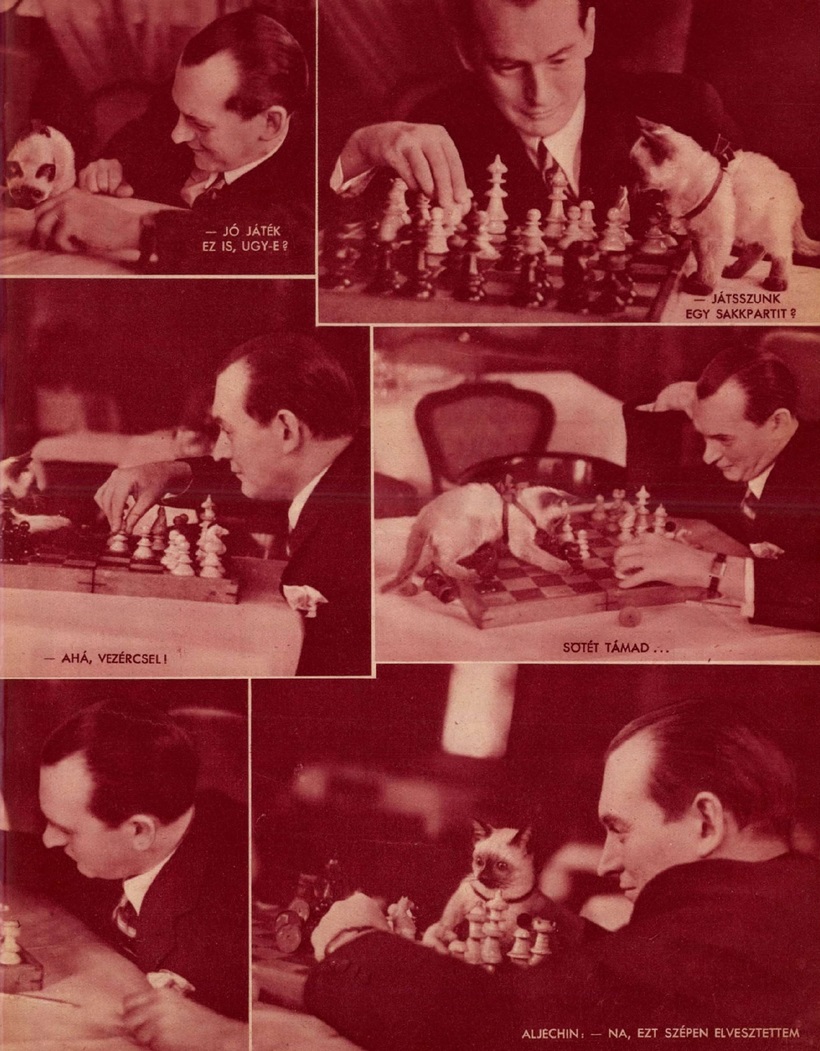
A 1942 shot of Alekhine (courtesy of the Ullstein Bild archive):
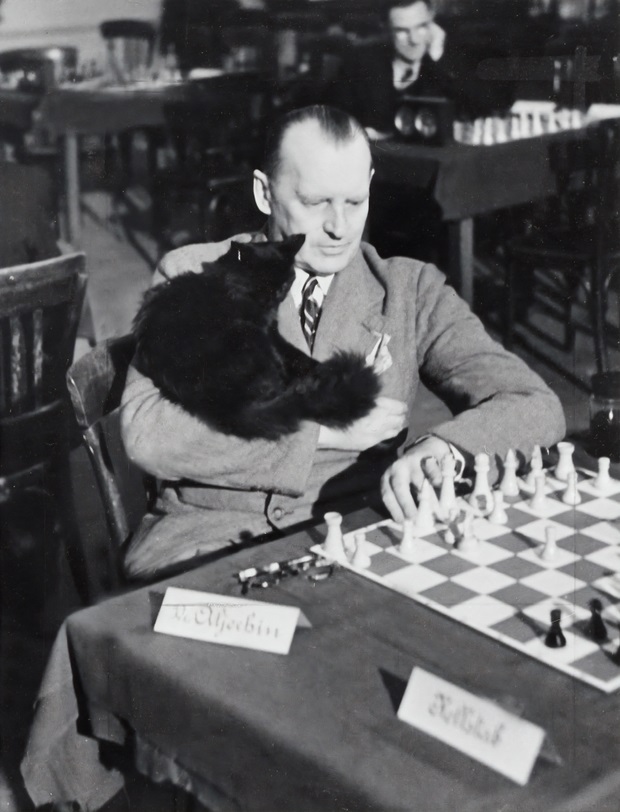
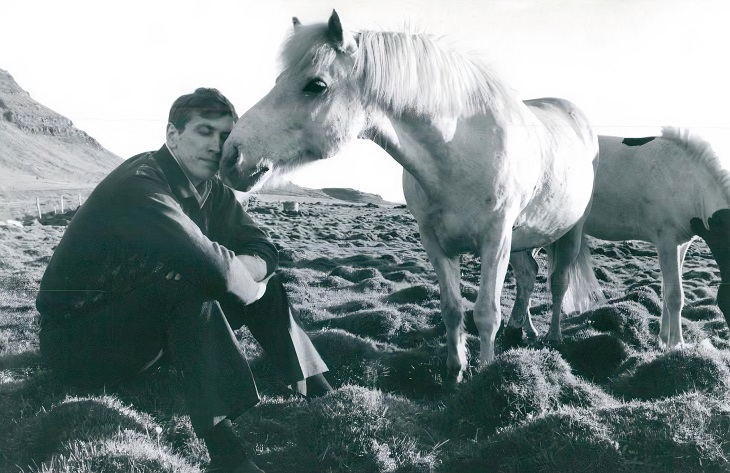
Bobby Fischer (Harry Benson Collection)
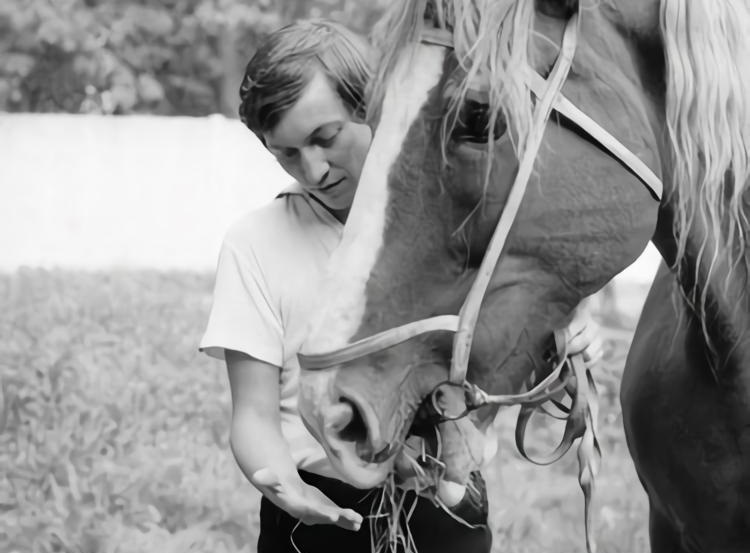
Anatoly Karpov (Sputnik Archive)
In our review of Chess is My Life by Anatoly Karpov and Aleksandr Roshal (Oxford, 1980) we wrote on pages 444-446 of the October 1981 BCM:
The idealized portrayal is even aided by the photographs, an offbeat collection in which Karpov dutifully conveys to the camera his talent for fishing, boating, playing billiards, appreciating art, feeding a horse and collecting stamps. (Not all in the same snap, it should be pointed out, although Roshal’s fawning prose suggests that Karpov might well cope even with that.)
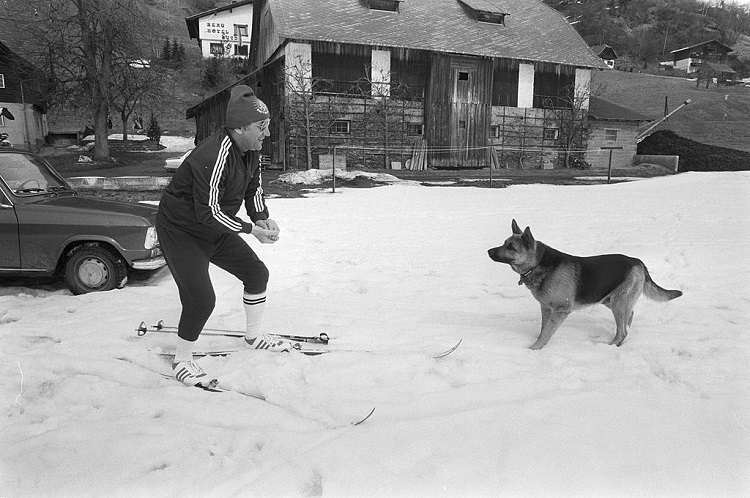
Victor Korchnoi in Velden am Wörthersee, March 1980 (Paris Match Archive)
To the Archives
for other feature articles.
Copyright Edward Winter. All rights reserved.